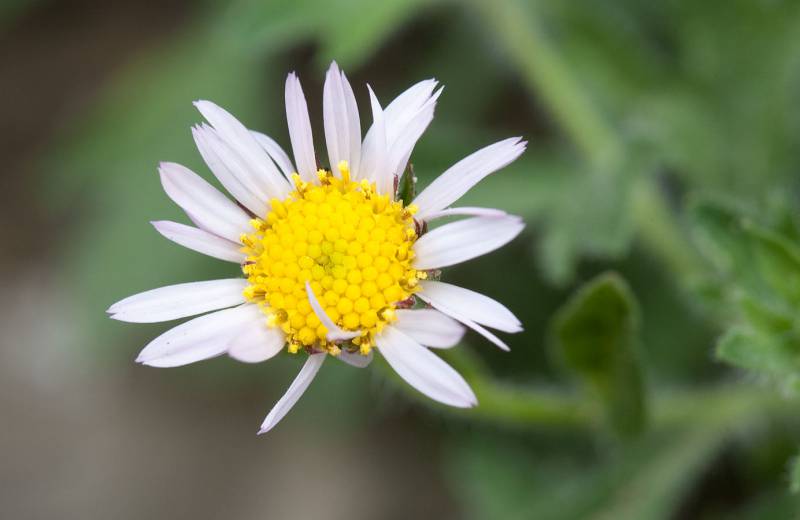|
basalt fleabane
|
Eaton's fleabane
|
| Several stems from a perennial taproot, sprawling, branched and leafy, especially near the tip. |
Perennial from a tap-root, 5-30 cm. tall, the stems decumbent and purplish at the base, with appressed hairs. |
Leaves with stiff, blunt hairs and fine glands, wedge-shaped to obovate, up to 4 cm. long and 1.5 cm. wide, deeply tri-lobed, the lobes broad. |
Basal leaves tufted, narrow, acute, gradually tapering to the petiole; cauline leaves several, conspicuously reduced. |
Heads terminating the branches, the disk 8-12 mm. wide; involucre 5-6 mm. high, densely glandular; rays 25-30, light pink or pinkish-purple, 5-7 mm. long and 1.5 mm. wide; disk corollas 3-4 mm. long, pale yellow; pappus of 10-15 capillary bristles. |
Heads solitary or up to 7 in an open inflorescence; involucres 5-7 mm. high; rays 20-50, pistillate, white, 5-10 mm. long and 1-3 mm. wide; disk corollas 3.5-5 mm. long, yellow; inner pappus bristles 15-20, outer obscure. |
|
|
|
|
| May-July |
May-July |
| Cliff crevices in rocky canyons. |
Grasslands, sagebrush, dry slopes, and forest openings at low to middle elevations. |
Occurring east of the Cascades crest where endemic to Kittitas and Yakima counties in Washington.
|
Occurring east of the Cascades crest in central and southeastern Washington; central Washington to California, east to the Rocky Mountains.
|
| Native |
Native |
| Threatened in Washington (WANHP) |
Not of concern |
E. acris, E. aliceae, E. annuus, E. aureus, E. bloomeri, E. caespitosus, E. chrysopsidis, E. compositus, E. corymbosus, E. davisii, E. disparipilus, E. divergens, E. eatonii, E. elatus, E. filifolius, E. flettii, E. glacialis, E. howellii, E. inornatus, E. karvinskianus, E. leibergii, E. linearis, E. lonchophyllus, E. nivalis, E. oreganus, E. peregrinus, E. philadelphicus, E. piperianus, E. poliospermus, E. pumilus, E. salishii, E. speciosus, E. strigosus, E. subtrinervis |
E. acris, E. aliceae, E. annuus, E. aureus, E. basalticus, E. bloomeri, E. caespitosus, E. chrysopsidis, E. compositus, E. corymbosus, E. davisii, E. disparipilus, E. divergens, E. elatus, E. filifolius, E. flettii, E. glacialis, E. howellii, E. inornatus, E. karvinskianus, E. leibergii, E. linearis, E. lonchophyllus, E. nivalis, E. oreganus, E. peregrinus, E. philadelphicus, E. piperianus, E. poliospermus, E. pumilus, E. salishii, E. speciosus, E. strigosus, E. subtrinervis |
|
|
| |



